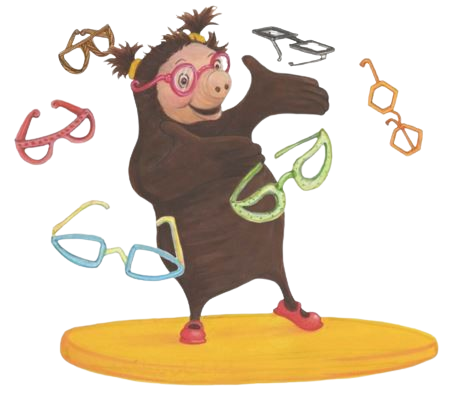Preliminary projections indicate that myopia and high myopia will affect 52% and 10.0% respectively, of the world’s population by 2050. Myopia and high myopia are associated with severe ocular complications. Early detection and prevention of myopia are important to curb this epidemic.

High myopia (-6.00 D and up) results in ocular complications that can lead to vision impairment – sometimes irreversible. With the growing number of high myopia the number of people with ocular complications from myopia is on the rise.
- Cost of Care: globally it has been estimated that visual impairment resulting from uncorrected myopia results in $244 billion worth of loss of productivity and that blindness resulting from MMD results in a $6 billion dollar productivity loss
- Quality of life: Myopia impairs many aspects of life such as educational and occupational activities.
Reducing the rate of myopia progression by 50% could reduce the prevalence of high myopia by up to 90%
Risk factors for myopia
Genetic and Environmental factors
- Family history: There is a strong association between parental history of myopia and genesis of myopia in the offspring even after adjusting for environmental factors (Lim et al. 2014)
Compared to children who do not have myopic parents; children who have one myopic parent have a threefold risk of myopia, and children with two myopic parents have six times the risk
(Kurtz et al, 2007; Guggenheim et al, 2007; Mutti et al, 2002).
- Age of onset: Age of myopia onset or longer duration of myopia progression was the most important predictor of high myopia in later childhood in myopic children.
- Ethnicity: Highest prevalence of myopia tends to occur in East and Southeast Asia, with a much lower prevalence in the rest of the world.
In children wearing single vision spectacles, higher myopia progression rates (-0.20 D per year faster) were found in urban Asians compared to urban populations of mainly European descent (Donovan et al. 2012)
- Time outdoors and near work: It is reported that when children spend sufficient time outdoors (more than 2 hours a day) the risk of myopia was reduced even when they had two myopic parents and continued to perform near work. Time outdoors is protective against the development of myopia.
- Brightness of light exposure (increased short-wavelength 360-400 nm) and UV light exposure. (Gifford 2019)
- Outdoor light releases dopamine which decreases eye growth.
- Looking at a distance: flat dioptric topography outdoors slows eye growth.
- Hypotheses that myopes have lower levels of vitamin D.






